Yanko Design - Latest Posts |  |
- ZINK Imaging Seeks New Innovative Solutions From The Design Community
- It’s Summer But Some Still Need Heaters
- I Just Don’t See The Time
- Self-Stirring Pot
- Future of ID
- Interview with Jon Kolko of Frog Design
| ZINK Imaging Seeks New Innovative Solutions From The Design Community Posted: 28 May 2009 06:55 AM PDT Nothing in life comes for free except for advice. That's something people dole out to you unsolicited and don't even charge you a red cent! This theory gets a twist when you're someone as innovative as ZINK Imaging, who's actually asking the design community for new “solutions” and applications (not new form factors for existing products etc.) that enable and enhance printing with the ZINK Technology. Essentially, it's about the whole design solution, not just the fit and finish. If you think you got it in you to provide a super solution; then enter ZINK Imaging’s Zero Boundaries Design Competition. Roughly two weeks are left before the contest closes and the first 50 submissions received by June 1 will receive a free ZINK-enabled product and ZINK Paper supply. Cool! The contest is open to established design firms, emerging designers, and students of design. As ZINK puts it, "The design challenge is to re-imagine printing and its role in the digital world using the ZINK Technology to fuel the future possibilities of this unique technology platform." Registrations are open NOW and the Design Submissions are due on June 8th 2009. The Finalists will be announced on June 22nd and the Winners take home the booty by June 29th 2009. What are the awards? • First place - Option 1 - $10,000 cash prize There are many rules and info that you need to go through before you register, but lemme highlight a couple of them for you. - Participants can submit multiple entries AND win multiple prizes. - A fresh perspective on printing is desired; a global perspective from both students and professionals that explores printing possibilities beyond the traditional thinking about how and where printing integrates into a person’s life. - Entrants are challenged to design a complete ZINK-enabled product “ecosystem” that demonstrates the power of the ZINK Technology to link the digital world to the real world via a tangible ZINK Print. Entrants have two ways they can solve this challenge: 1) by creating a ZINK ecosystem that will make today’s youth crave ZINK products in the context of their digital and mobile world or 2) by creating a “ZINK World” in a context or market of their choice. For complete details head here and here. All the best! No Tags |
| It’s Summer But Some Still Need Heaters Posted: 28 May 2009 04:34 AM PDT It's so damn hot where I live that I can't think of anything else but an air conditioner at the moment. But since we have readers from across the globe, this one's especially for those who experience snow in summers. LASKO Home Innovations commissioned a space heater, and this is what they got. It's a special one that sucks in air from the perforated silver piece on the bottom. The internal oscillation varies from 90 degrees, 170 degrees to a full 360 degrees, thereby making it convenient to place centrally in a room. The perforated piece on the bottom can be removed to reveal the meshing. Keeping this mesh clean prolongs the life of the heater. I simply love its minimal design coz it's really space-saving Designer: Matthew Catrino
|
| Posted: 28 May 2009 02:06 AM PDT Let's call this a Swiss Watchmaker's worst nightmare, a clock where you can barely see the time. We are so caught up in our own time-warps that we rarely get an excuse to pause and ponder. The Soft Clock here is best described as "an incessantly twisting art-object than a proper instrument for time measurement." For those who want constant reminders of the persistent tick-tok, get a real clock. Let this Soft one be for us dreamers…… Designer: Egor Myznik
On the flip side, for those of us who need to live by precise timings, check out these timeless beauties! Digilog by Masayoshi Suzuki of Pinto
Silence Alarm Clock by Johan Brengesjo
|
| Posted: 28 May 2009 12:01 AM PDT The kind of pot you put sauce in. And self-stirring in that it’s got its own mechanism built in to the pot. You put your sauce in there, start to heat it up, put the cover on, and turn the crank. Turn the crank and laugh! Laugh at the industrial genius of this mechanism! Ah haaa! Yes! Sauce! Sauce forever! Seriously sauce forever. What more do you want from a pot than a stirrer automatica? I can think of a few times where it’d be less-than-helpful. Those times with stuff such as spaghetti, I’d opt out of the stirrer. But check out the bottom of the pot! It’s concave! It is shaped thus so that the “specially shaped teflon base will increase the suface area that is exposed to fire.” Physicists, is this ever a bad idea? This “Wrinkle” pot was designed by Cem Tutuncuoglu - a very, very strange man. You simply must check out his landing page: http://cemtutuncuoglu.com/ Designer: Cem Tutuncuoglu
|
| Posted: 28 May 2009 12:00 AM PDT Pratt students are making their mark at the “Design for a Dollar” exhibition, International Contemporary Furniture Fair. However I'm here to showcase how enterprising their ID students can be. Three projects: Grind by Dana de Vega, Loop End Table by Carla Franciose and Array Series by Jason Pfaeffle; reflect how simple thinking and industrious application can prove to be winning designs. Take a look at them after the jump. The Grind by Dana de Vega
Inspired by the motion of twisting and industrial instruments such as boiler drain valves, Dana has designed this seasoning mill with black anodized aluminum for the pepper mill and clear anodized aluminum for the salt mill. Notes from Dana:
Loop End Table by Carla Franciose
Fashioned out of nickel-plated 14-gauge hot-rolled steel strips, this table screams sophistication. The base is made is made from five ribbon shaped modules welded together. The dimenstions for the table are: 25" diameter clear glass top that is 3/8" thick; table height 21". Array Series by Jason Pfaeffle
The Array Series revolves around the use of a single cast aluminum component, combined with hardwood dowels that can form a range of useful products. It uses one main component and a stock diameter dowel, thus reducing materials and production costs. Notes from Jason:
Special Credit to Diana Pau for all the photographs. Carla Franciose, coat, Dana de Vega, Jason Pfaeffle, pepper, salt, Table, valve |
| Interview with Jon Kolko of Frog Design Posted: 27 May 2009 11:48 AM PDT Having met Jon Kolko at the Bounce IDSA conference I was pleased as punch to get him to sit down for an exclusive YD interview. Acting as Senior Design Analyst at Frog Design in Austin and Editor-in-Chief of Interactions Magazine, Jon brings dizzying insights to the worlds of interaction design and its ramifications to industrial design and research. Click through to our interview after the jump, but also check out some of his excellent talks like the recent Austin Creative Confab or his presentation on design synthesis. Basing his conference talk on the influence of outsourced design and how we need to change as designers to stay relevant, Jon Kolko urges us to become more culture-centric to stay afloat (see his presentation’s slide deck here). _______________________ Billy May: Your career has had a predominant focus on interaction design and even software, yet there has always seemed to be a affinity for industrial design lingering just behind the curtain. What continues to draw you to that field over the perhaps more germane (or at least typical) field of graphic design?Jon Kolko: I have a degree in Industrial Design, and I think standard industrial design training – basic form exercises in the context of a traditional Bauhaus studio model – helps forge a fundamentally different way about thinking about more timely design problems of time and behavior. I can keep a fairly complicated problem of interaction in my "headspace" at once, much like an industrial designer can keep the complexities of a physical object in their working cognition and manipulate it as they desire, flipping it over or cutting through it. An interaction problem has nodes and branches and ultimately takes up an artificial "mass" when visualized. Consider a concept map, or a flow diagram; this can be navigated and manipulated in the mind just like a toaster or a blender.My draw towards interaction is kind of ironic, I guess, because I love beautiful objects but I hate "things". I've never really been passionate about mass produced items, like an iPod or a car, only with art – one offs, made by hand, crafted and cared for. Design is less, to me, about the output and more about the process.BM: In an earlier talk, you professed a love for configuration software; besides fun projects like that, what kind of problems and projects really get under your skin and excite you?JK: As tongue in cheek as that point may have been, I do enjoy designing configuration software, and pricing software, and the other gnarly problems of the enterprise, not because I'm some sort of configuration masochist but because these problems are hard. I've worked on the entire spectrum, from consumer electronics to software and to the web, yet the design problems I enjoy most are the ones that are difficult to solve. Un-fucking the complex is one of the things that I get the most excited about. This is true in the public sector – where the problems are complicated by various stakeholders, agencies, and a lack of resources – and in business, where the problems are fueled by competing groups, quarterly priorities, and a tendency to latch onto fads and trends. Taming complexity, making sense of chaos, and generally righting the wrong – that's what design's all about.BM: Your talk gave a lot of attention to the aggressive expansion of outsourced industrial design and designers’ need to gird their careers by reaching deeper into research. Having a background in both education and curriculum development, what challenges do design schools face in the changing market and how do they need to react to keep their students relevant and marketable? What do students need to start doing themselves if their programs fail to adapt fast enough?JK: There's no "if" about it; with some obvious exceptions (such as Delft or University of Cincinnati), design programs in the United States and Europe haven't adapted fast enough. It's a strange time for graduating seniors; the economic strife we have going on in the states is a red herring for design graduates, who should really be looking at Asia and thinking about how they can stay relevant when the million Asian designers hit the global marketplace.I think students need to focus on the intellectual aspects of design, rather than becoming enamored with the more obvious, traditional, and seemingly glamorous parts of design. Many students see Karim Rashid, or other flamboyant form givers, talk about design, and fail to realize that these are purposefully produced public approaches to a profession, much like Paris Hilton is to media. Design isn't about that, at least not the design that's going to land you a job and help you pay your mortgage. It's about something thoughtful, and methodical, and useful, and beautiful, all at once. The design I talk about, and the design work we do at frog, is so far away from the "making beautiful objects" of yesterday that it's almost a different job entirely.BM: Many of the designers I spoke with at the conference shared your conviction for a greater amount of responsibility on the part of students for activities upstream of form giving. Do you think design programs need to append more skill sets on top of the typical foundation of form giving or do you see the intellectual side of things cannibalizing other course work?JK: It's a difficult line to walk. Having built a curriculum in Industrial design, I feel the pain of any educator trying to balance the increasing demands of the design profession with a constrained set of "slots". The constraints are actually larger than simply fitting in all of the required design courses; most accreditation programs require a percentage of classes as general education or liberal arts, which ultimately may be the most important classes students take – but are viewed by both the students and the faculty as "wasted space" that could otherwise be filled by more drawing courses.
|
| You are subscribed to email updates from Yanko Design To stop receiving these emails, you may unsubscribe now. | Email delivery powered by Google |
Inbox too full?  | |
| If you prefer to unsubscribe via postal mail, write to: Yanko Design, c/o Google, 20 W Kinzie, Chicago IL USA 60610 | |










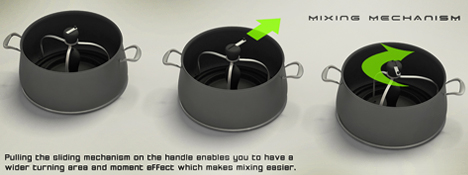

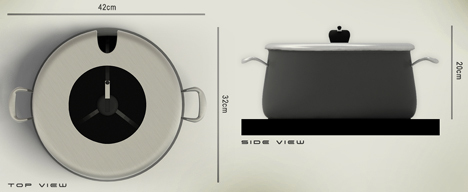
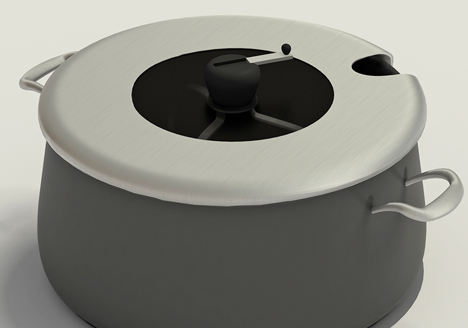

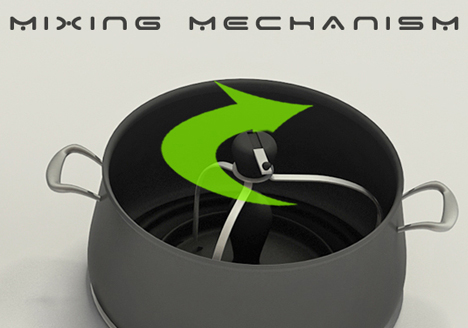
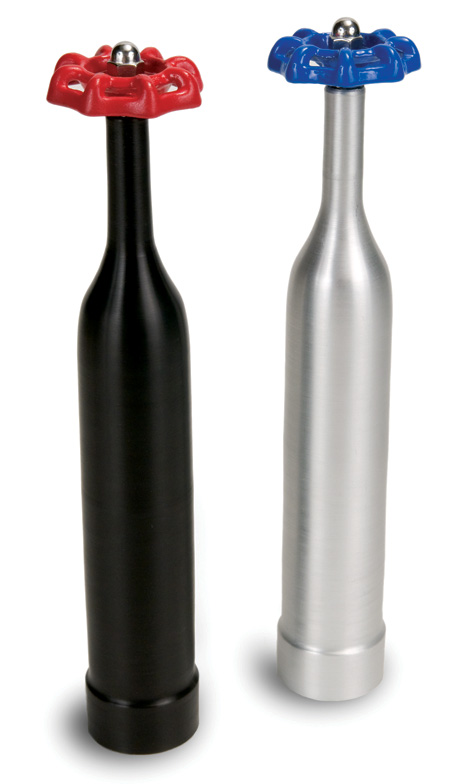


No comments:
Post a Comment